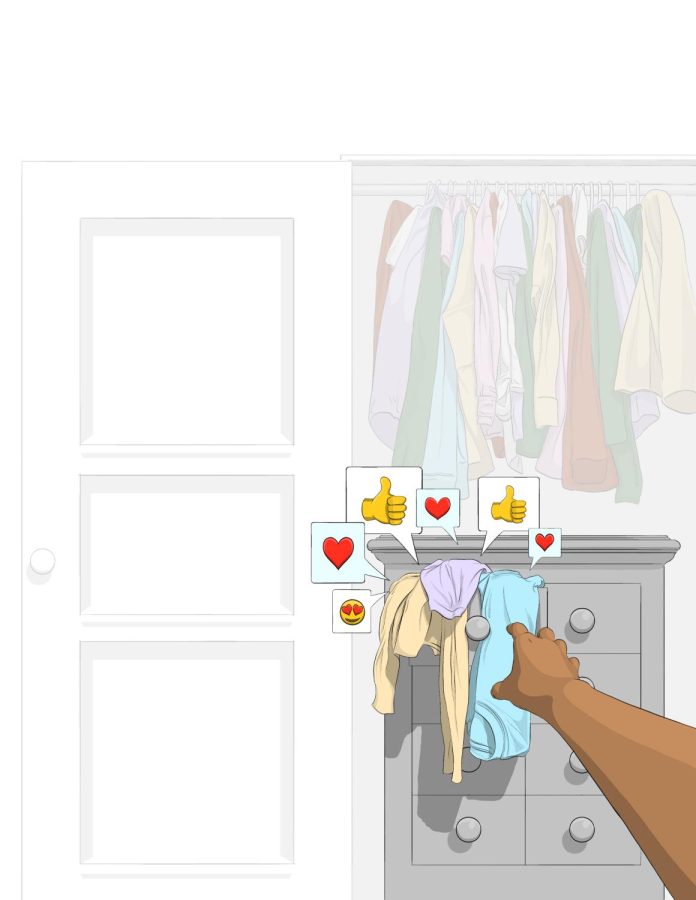The hold social media has on the fashion industry is undeniable. We’ve reached a point where Vogue, the top selling fashion magazine, is attributing the current twee craze to TikTok and claiming micro-influencers will have a major impact on buyers this year. But, social media’s influence goes much deeper than trends.
The biggest impact of social media on fashion is that it has led to a increased awareness about various styles, and by extension gives individuals the power to explore and express themselves through their own personal style.
“[Social media] encourages people to try something new and be bold when it comes to fashion,” said Hayden Lehr, Trinity alumna and fashion student at Parsons School of Design.
This rise of individualism in fashion is caused primarily by social media algorithms, which work to fill your feed with posts relevant to you. These algorithms help develop your style by suggesting posts that expand your taste or provide inspiration for new outfits.
“Everyone has their own algorithm with suggested posts to them,” Lehr said. “Their algorithm might pop up with some clothes or models and celebrities that can influence their style.”
Social media’s benefit to personal style doesn’t just stop at inspiration. Some people will dedicate their pages to providing fashion advice that can range from more general tips to tutorials on dressing a certain way, which provides welcome help to people breaking into specific styles or even fashion as a whole.
“It’s a smaller group of people on social media that will actually help people find their own style, but there’s still a substantial amount of people doing that,” senior Elaine Peng said.
However, social media also gives many fast fashion brands a platform to capitalize off of trends and sell environmentally unfriendly, poor quality products made using unethical labor. The most notorious example of this harmful social media fast fashion is Shein.
Shein is an online-only clothing outlet that gained its popularity through social media by releasing thousands of trendy pieces weekly for a fraction of the price. However, the way Shein is able to maintain these prices is through abusive sweatshop labor and environmentally unsustainable clothing production.
“BOGO fast fashion encourages people to buy the newest trend as quickly as possible, as cheap as possible and really they hurt the environment and the people who make the clothes,” Lehr said.
Social media also plays a role in preventing this harm. Widespread access to the internet makes it easier than ever for the consumer to become informed and avoid fast fashion companies that hurt the environment or use unfair labor practices.
“In this day and age of information being at our fingertips, I think now it’s really up to us to do our research and choose where we buy from,” Lehr said.
And, this widespread consumer outcry against harmful practices has made its impact. Many fast fashion brands like Uniqlo and H&M have strived for more ethical labor and improving their environmental footprint through use of recycled and organic materials.
Consumer criticism has also spurred environmentally beneficial innovations like Mylo leather and Modern Meadow’s Bio-Alloy which allow for animal free synthetic leather creation using mycelium and DNA editing. These innovations, along with the rise of sustainable clothing production through upcycling and recycling fabric are proof that a vocal consumer base can lead to real innovation and change.
“We are the driving force for these brands,” Lehr said. “Their goal is for us to consume, so if we demand something beneficial, they change to meet those demands.”
















